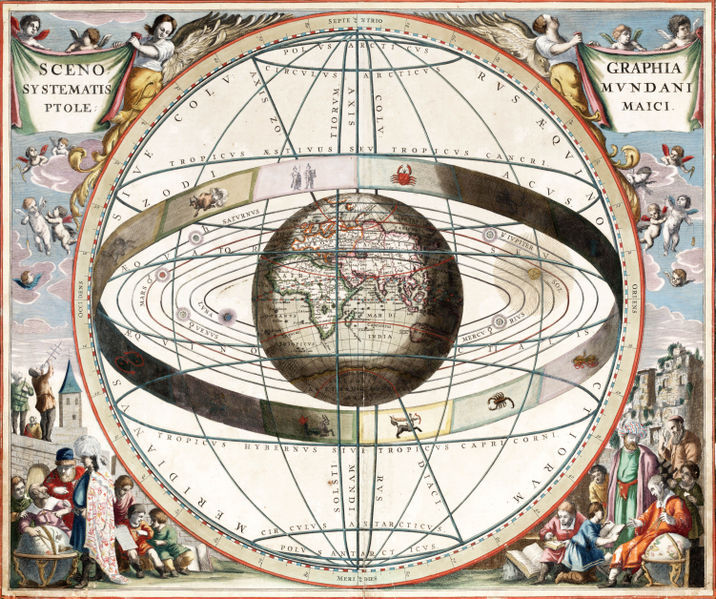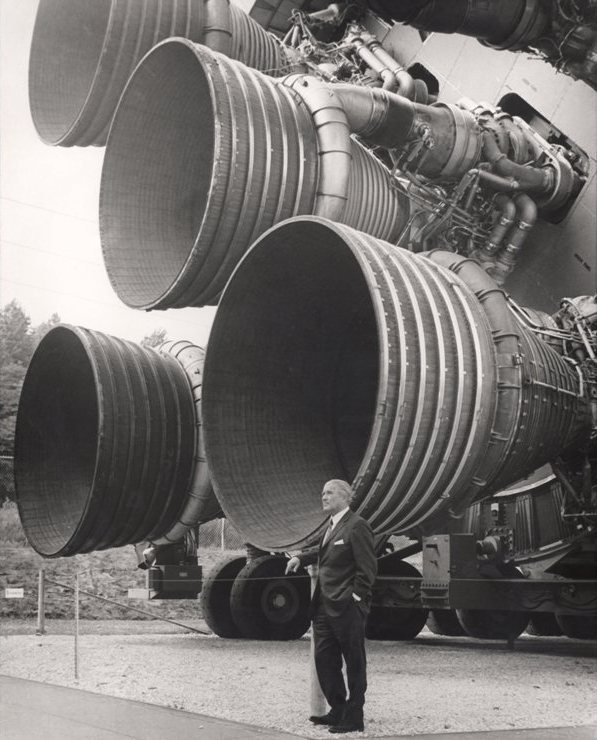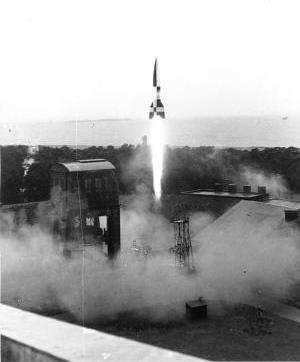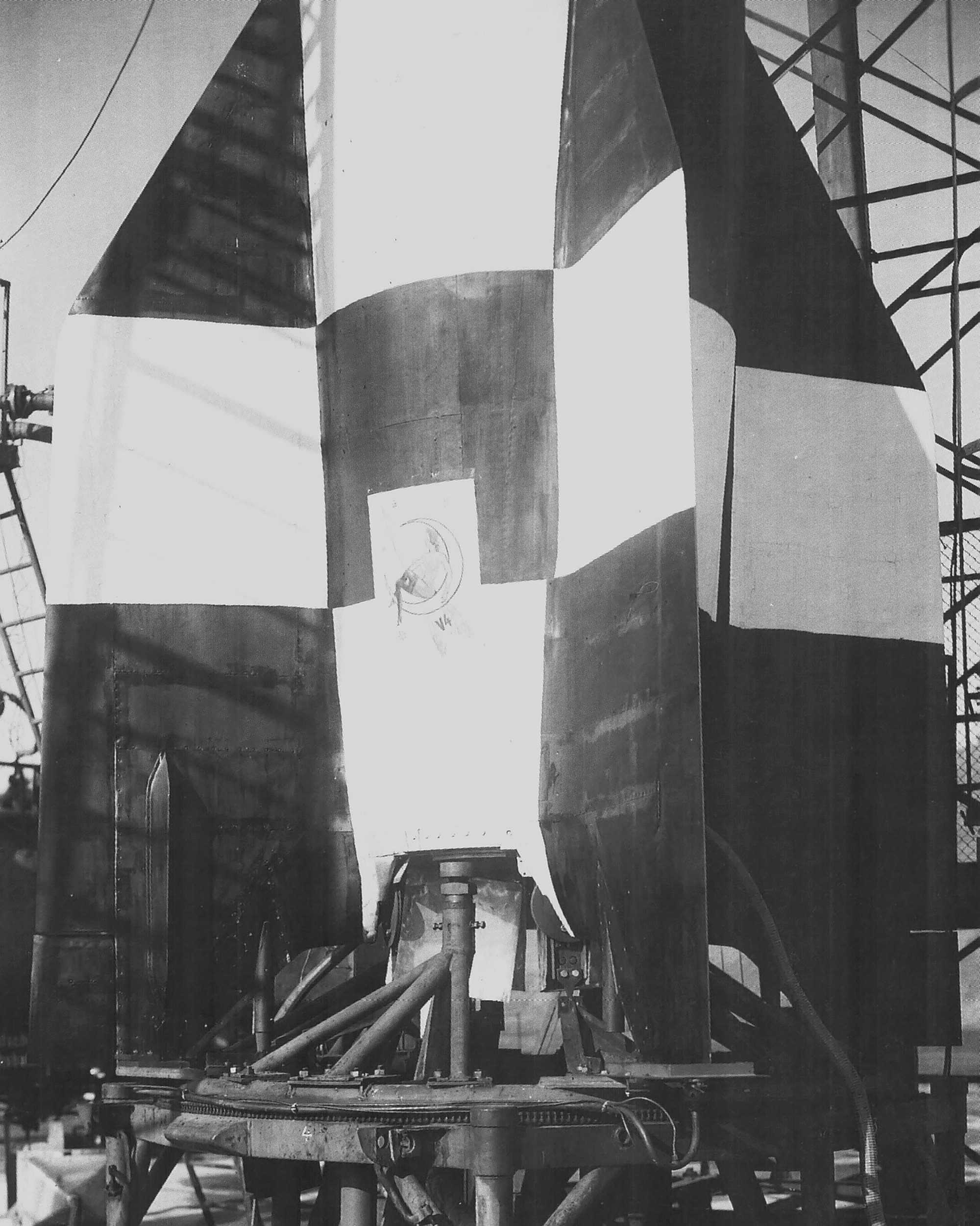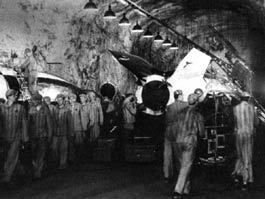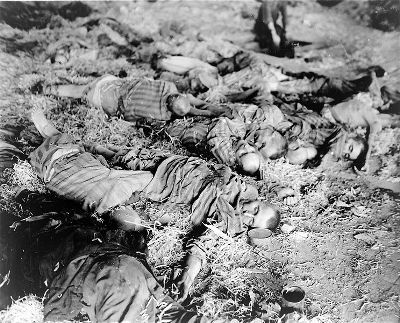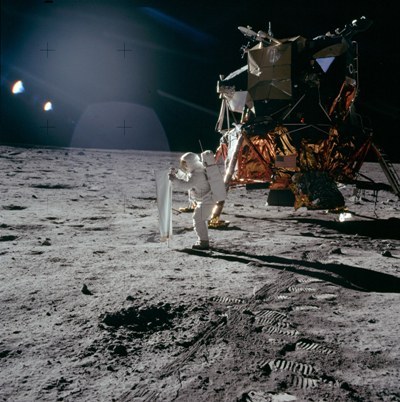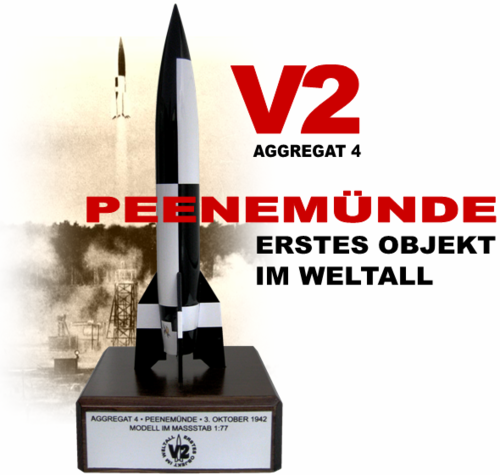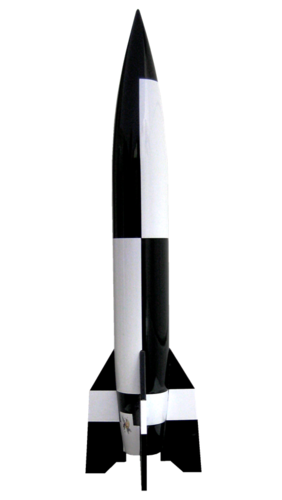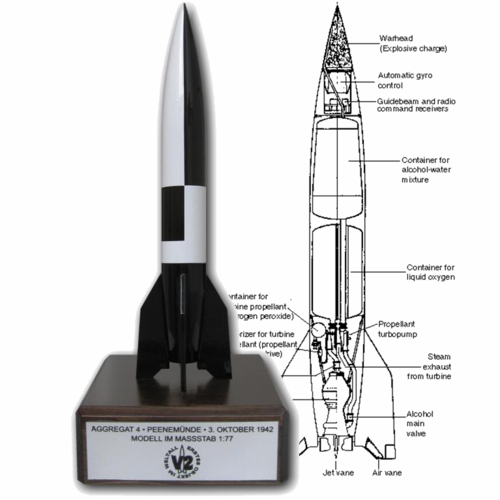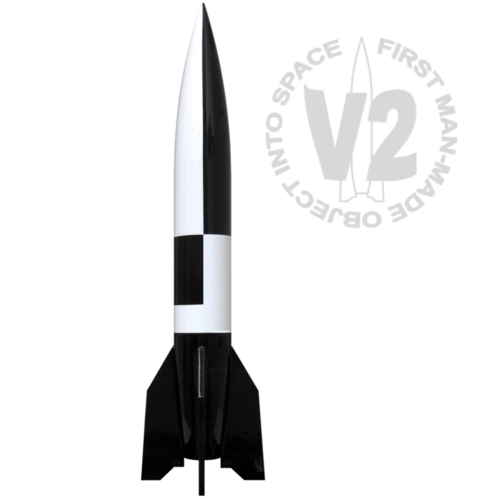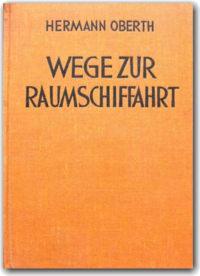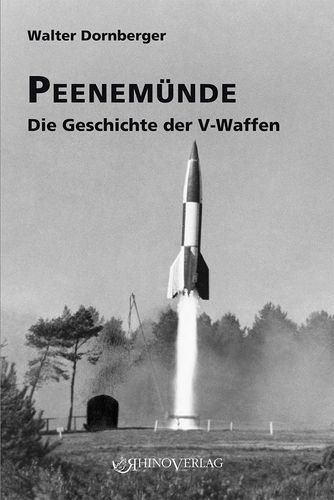Home page V-2 models The V-2 story
From Peenemunde to the Moon – The V-2 story
|
The "Woman in the Moon" – ideogram on the Aggregat 4 / V-2 of October 3, 1942 |
.... |
"… rather, there is no more important principle for all forms of history than the one with which we attain with much difficulty but which we also actually should attain, especially that which causes a particular thing to arise and the final usefulness of that thing, its actual use and classification in a system of purposes, are separate toto coelo by the heavens, absolutely from each other, that something existing, which has somehow come to its present state, will be interpreted many times by the higher power over it from a new perspective, appropriated in a new way, reorganized for and redirected to new uses, that all events in the organic world involve overwhelming, acquiring mastery and that, in turn, all overpowering and attaining mastery involve a new comprehension, a readjustment, in which the “sense” and “purpose” up to then must be accordingly vague or totally erased." Friedrich Nietzsche |
|
Ptolemaic world system with the earth in the center |
* The Heliocentric Worldview
It will be new to some that Nicolaus Copernicus (1473 – 1543) could be regarded equally as a German or Pole. Most will know that he displaced the Earth from the centre of the universe, and replaces it with the Sun. His fellow countryman Johannes Kepler (1571 – 1630) replaced Copernicus’s circular orbits model with elliptical orbits and established the idea of our solar system, which is fundamentally valid today. Only a few will know however that Aristarchus of Samos was the first to develop a heliocentric model for the solar system approximately 300 BCE. Aristarchus made a serious error in estimating the size of the Sun and the distance to Earth* but reached the conclusion as Archimedes reported that the Sun and fixed stars do not move but the Earth orbits the Sun. Other thoughts were however mightier than his and so the heliocentric system was lost again largely in the darkness of history. Although this cannot be confirmed, it is reported that Aristarchus along with Galileo Galilei another advocator of the heliocentric system were accused by defenders of the divine order because his belief shook the foundation of their world. What is supported is that in the ancient world the mob became agitated because they were accused of blasphemy and could pose a threat. On the one hand this short story shows that some things are (need to be) discovered more than once, on the other hand it proves that errors can be perpetuated for a good 1,000 years and longer. Beyond that it should be remembered that it takes substantially more than a rocket for a flight to the stars. Be that as it may, the way the world looks today it is as though it would not seem right without a rocket. And, the first rocket with which the human race actually launched into space was the Aggregat4 the so called V2. _______________ * According to Aristarchus the sun is 19 times as far away from the Earth as the moon is and has 6.75 times the diameter of the Earth. But, the actual distance is 400 times and a diameter of 110 times. |
|
|
Wernher von Braun in front of a Saturn V rocket engine |
* Force Needs a Direction
"I implore you, my brothers, to remain faithful to the earth and not to believe those who speak to you of superearthly hopes! Preparer of poison are they, whether they know it or not." Friedrich Nietzsche. Thus Spoke Zarathustra
On the 3rd October 1942 in Peenemuende on the North West point, the first man-made object was launched into space. During the Second World War the rocket was given a name for propaganda purposes – V2. With this name, the rocket became known world wide. It was visionaries, technicians, engineers, doctors, military personnel and craftsmen who dynamically and creatively followed the genius of Wernher von Braun and with the support of thousands of hands a new age for mankind began – the age of space travel.
|
|
|
Start of an Aggregat 4 / V-2 from Teststand 7 at Peenemünde testing ground during World War Two
Rear of the Aggregat 4 / V-2, which as the first manmade object touched outer space on 3 October 1942. Between the fins the image of the "Woman in the Moon". |
* October 3, 1942
"We reached into space with our rocket." Colonel Walter Dornberger after the succesful flight on October 3, 1942
It was children’s dreams and the books of visionaries such as Hermann Oberth*, the technical potential, possibilities of modernity, and the financial means of the German army which prepared the ground on 3rd October 1942 for a decisive step of human development of technology. 10 years before Wernher von Braun was only one of many meticulous rocket enthusiasts whose enthusiasm for the cause was only exceeded by the scarcity of means for implementing their imagination. Searching for technology which was not prohibited under the Versailles treaty, in October 1932 Colonel Dornberger campaigned for the young 19 year old student for the post of technical leader of the German Army's weapons development division. Only here were there realistic opportunities for the young von Braun to factually advance his greatest goal – a flight to the stars. Finally, in October 1942 he was the technical leader of the rocket development in the army research centre of Peenemuende and the first rocket had reached out into space. This rocket was developed to be used as a weapon in war. From the beginning, in Peenemuende, the concept however was designed for space travel. With exceptional investment and within a short time period, in 1936 the army research centre became operational. Thousands of people worked here under the cover of secrecy. Their development work established the basis for space travel and culminated in the manned moon shot in 1969. On the space flight on 3rd October 1942 the A 4 reached the highest point of its trajectory at 84 km. In further height tests the projectile ascended up to 184 km over the Earth. “If the rocket is not considered as a weapon, the overall future prospects are enormous. A dream can become reality and from hope and theoretical thoughts the spacecraft can be realised. Our work, our accomplishments and our success have made the first contributions. To ensure that they are not lost, the winner of hopefully this last war of mankind must take on this task.” ** _______________ *His published book (1922): “Die Rakete zu den Planetenräumen” inspired the young Wernher von Braun and challenged him to take up studying physics, as he hardly understood anything about technical mathematical designs. Oberth handed in his papers as a dissertation to the University of Heidelberg. It was rejected as nobody was able to assess it. ** After the end of the war, Walter Dornberger, military project leader, relocated to the U.S.A. with Wernher von Braun’s development team and summed up his book, published in 1952, with the words: “V2 – The shot into space”, as quoted. |
|
|
Prisoners in V-2 production in the Buchenwald concentration camp, Dora Mittelbau
Victims oft the "extermination by work" in the concentration camp Mittelbau Dora in April 1945 |
* World War Two, Adolf Hitler and the "Miracle Weapon"
"But I want to make a devasting, – I want to make a devasting impact!"* Adolf Hitler after a presentation of the V-2 on Juli 7, 1943
Hitler’s goals were to strengthen his German nation, exterminate the Jews, to unify the European region under Germany’s leadership and to acquire more living space in the East. o achieve these goals he placed very little importance to the development work of the rocket enthusiasts in Peenemuende. Only in 1943 when the Germans started facing defeat did Hitler rapidly clutch at the straw which was to become the silver bullet. But the silver bullet was certainly not to be the A4, the V2. It was neither a product suitable for mass production nor an unerringly powerful weapon. And the decisive factor was that even using all the resources available, it would be impossible to create this immediately. With the illusion of “make or break” the production capacity was cruelly and brutally stepped up. In the “Dora concentration camp” which belonged to the Buchenwald concentration camp, approximately 20,000 people died in the production of the “silver bullet”. During its use in the war approximately 5,000 died. Even though it was too late for his Germany, on that day of 7th July 1943, when von Braun and Dornberger presented their results to him, Hitler recognized the importance of rocket technology for the war: "If we had had this weapon in 1939, there would have been no war – Europe and the World are too small for a war – now and in the future. Using these weapons will make the war unbearable for humans.”* _______________ *An Adolf Hitler quote from Walter Dornberger’s V2 – Der Schuss ins Weltall, p. 112ff |
|
|
July 20, 1969 – Buzz Aldrin and Neil Armstrong land on the moon while Michael Collins navigates the spacecraft in Lunar Orbit |
* Flight to the Stars
"But in a very real sens, it will not be one man going to the moon – it will be an entire nation." John F. Kennedy in his speech: "Urgent National Needs", May 25, 1961
After Germany’s defeat there were hardly any realistic alternatives open for Wernher von Braun and the Peenemuende developers. The Americans removed all the V2 rockets which were left at the Dora concentration camp and took them to the USA, as well as the complete documentation of the development and Wernher von Braun and some of his team. The ‘hot war’ turned into a’ cold war’ and thanks to the Germans, the Americans possessed revolutionary know-how. Whilst the Americans, mainly without the involvement of the German rocket pioneers, continued to enhance the technology they obtained, von Braun never lost track of his goal. He continued his work on designing for space travel and started to sell space travel to the Americans. He enthusiastically campaigned for the implementation of his ideas. When the Soviet Union launched the first satellite in October 1957 and in April 1961 with Juri Gagarin the first person into space, the Americans grasped the “Wernher von Braun team” back and President Kennedy adopted von Braun’s publicised goal as his own: the flight to the moon. About 30 years after the first attempts, in the legendary “Spaceflight Club” and almost 20 years after the success in Peenemuende, the resources were now available to complete the great dream of the flight to the stars. On 20th July 1969 when the astronauts of the Apollo 11 mission landed and walked on the moon, von Braun and the Peenemuende pioneers together with the might of the Americans had finally accomplished their goal. |
|
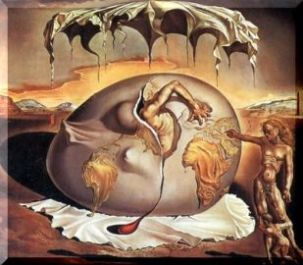 |
* The Age of Spacetravel
"The formula of my happieness: a Yes, a No, a straight line, a goal..." Friedrich Nietzsche. Twilight of the Idols
When the mortals began to bear witness they all too often looked away from themselves, Earth and mankind. They invented Gods, Kingdom of Heavens, and hidden worlds as places to escape and to bear hope. They strived after salvation or followed the illusion of obtaining earthly happiness in the after-life. However much suffering or not, it was the view into the vastness of space and the reverence for the starlit sky, the aspiration for other Worlds and the desire for reaching the stars which drove people to look away from the Earth. But it is the reverse view towards Earth which enabled this aspiration and is defining the new dawning era. It was only when the people started reaching beyond Earth with their knowledge, did this view in every sense become possible. Only now can humans view and understand Earth in its entirety. The aspiration and the will towards other Worlds brought the people back to themselves in a large arc to their only real world. From celestial to terrestrial, from God to Humans, from heaven to Earth the visions of the great creator, the conqueror of all boundaries, the romantic idealists, the people who became God … … Off to new seas!
"I implore you, my brothers, to remain faithful to the earth" |
|
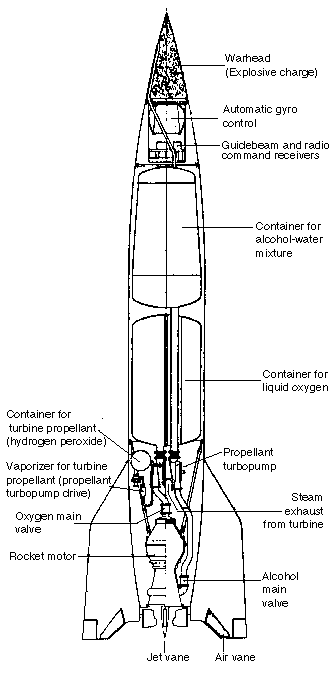 |
* Dimensions and Data of the Aggregat 4
Length total: 14.036 mm Kaliber: 1.651 mm Weight, empty: 3.985 kp Starting weight: 12.605 kp Driving force (thrust): 25.640 kp Driving period (burning time): 60 bis 63 sek Speed on the end of burning: 1.500 m/sek Maximum peak height reached: 184 km
* * *
V2 Rakete · V2 rocket · V2 roquette · Cohete V2 · V2 razzo · V2 missile · Rakety V2· 火箭 · 導彈 · 导弹 · 火箭 · A4 Rakete · A4 rocket · A4 roquette · Cohete A4 · A4 razzo · A4 missile · Rakety A4 ·V-2 Rakete · V-2 rocket · V-2 roquette · Cohete V-2 · V-2 razzo · V-2 missile · Rakety V-2 · A-4 Rakete · A-4 rocket · A-4 roquette · Cohete A-4 · A-4 razzo · A-4 missile · Rakety A-4 · ミサイル · ロケット · ロケット弾 · V2 · A4 · V-2 · A-4 · Aggregat 4 |
V-2 Rocket Model Detailed ++Product no.: 1400Detailed replication Aggregat 4 / V-2; scale 1:77; solid steel; wooden base; design October 3, 1942; brochure "V-2 Story"; giftbox
Delivery weight: 800 g
|
V-2 Rocket Model DetailedProduct no.: 1410Detailed replication of the Aggregat 4 / V-2 rocket; scale 1:77; solid steel; design "October 3, 1942"
Delivery weight: 600 g
|
V-2 Rocket Model October 3, 1942 ++Product no.: 1300True to original replication Aggregat 4 / V-2; scale 1:77; solid steel; wooden base; brochure "The V-2 Story"; giftbox
Delivery weight: 800 g
|
V-2 Rocket Model October 3, 1942Product no.: 1310True to original replication of the Aggregat 4 / V-2 rocket; scale of 1:77; solid steel; design "October 3, 1942"
Delivery weight: 600 g
|
V-2 Rocket Model Black & White +Product no.: 1200True to original replication Aggregat 4 / V-2; scale 1:77; solid steel; wooden base; typical black & white design
Delivery weight: 800 g
|
V-2 Rocket Model Black & WhiteProduct no.: 1210True to original replication of the V-2 rocket; scale 1:77; solid steel; typical black & white pattern of the test-rockets in Peenemuende
Delivery weight: 600 g
|
Rocket Cup, Trophy, Award, Silver +Product no.: 1100Silver-coloured neutral rocket (V-2 scale model, 1:77), solid steel, wooden base, base-label attached, cup, trophy, award
Delivery weight: 800 g
|
Neutral Rocket Model, Cup, Trophy, Award, SilverProduct no.: 1110Silver-coloured, neutral rocket model (Aggregat 4 / V-2 in scale 1:77), made of solid steel, Cup, Trophy, Award, Incentive
Delivery weight: 600 g
|
Rocket customised according to your ideaProduct no.: 1500Free customisable rocket model (V-2, scale 1:77) from solid steel; with or without base; as trophy, cup, advertising, gift, merchandising can be shipped within 30 bis 60 days |
Wege zur Raumschiffahrt (Hermann Oberth)Product no.: 3080
1929 erschienene, dritte erweiterte und umgestaltete Auflage von "Die Rakete zu den Planetenräumen".
933.33 €
*
Delivery weight: 1.01 kg
|
Peenemünde. Die Geschichte der V-WaffenProduct no.: 2000Authentischer und spannender Bericht des damaligen Leiters der Heeresversuchsstelle Peenemünde über die Entwicklung der V2 im Dritten Reich.
Delivery weight: 370 g
|
Planet Dora. Als Gefangener im Schatten der V2 (Yves Béon)Product no.: 2050Als Zwangsarbeiter Adolf Hitlers in Dora-Mittelbau überlebte Yves Béon dreizehn Monate Zwangsarbeit im Schatten der V2-Rakete.
Delivery weight: 0.5 kg
|
Net prices without VAT or delivery








